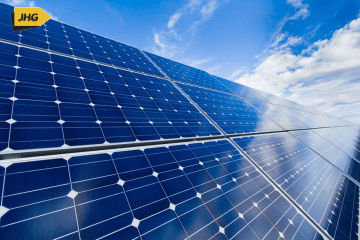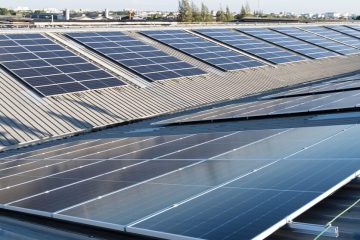As a renewable source of power, solar energy has an important role in reducing greenhouse gas emissions and mitigating climate change, which is critical to protecting humans, wildlife, and ecosystems. Solar energy can also improve air quality and reduce water use from energy production.
The sun is a huge source of energy that has only recently been tapped into. It provides immense resources which can generate clean, non-polluting, and sustainable electricity, thus resulting in no global warming emissions. In recent years, it was discovered that solar energy can be collected and stored, to be used on a global scale with the purpose of eventually replacing conventional sources of energy. As the world is turning its focus to cleaner power, solar energy has seen a significant rise in importance.
Solar energy technologies and power plants do not produce air pollution or greenhouse gases when operating. Using solar energy can have a positive, indirect effect on the environment when solar energy replaces or reduces the use of other energy sources that have larger effects on the environment. However, there are environmental issues related to the production and use of solar energy technologies.
Solar energy systems offer significant environmental benefits in comparison to conventional energy sources, thus they greatly contribute to the sustainable development of human activities. At times, however, the wide-scale deployment of such systems has to face potential negative environmental implications. These possible problems may be a strong barrier to the further advancement of these systems for some consumers.
The potential environmental impacts associated with solar power can be classified according to numerous categories, some of which are land use impacts, ecological impacts, impacts on water, air, and soil, and other impacts such as socioeconomic ones, and can vary greatly depending on the technology, which includes two broad categories:
- Photovoltaic (PV) solar panels or
- Concentrating solar thermal plants (CSP).
Solar energy technologies require the use of materials, such as metals and glass, that are energy intensive to make. The environmental issues related to the production of these materials could be associated with solar energy systems when conducting life-cycle or so-called cradle-to-grave environmental analysis. Studies conducted by a number of organizations and researchers have concluded that PV systems can produce the equivalent amount of energy that was used to manufacture the systems within 1 to 4 years. Most PV systems have operating lives of up to 30 years or more.
There are hazardous chemicals used to make photovoltaic (PV) cells and panels that must be carefully handled to avoid release into the environment. Some types of PV cell technologies use heavy metals, and these types of cells and PV panels may require special handling when they reach the end of their useful life. Some solar thermal systems use potentially hazardous fluids to transfer heat, and leaks of these materials could be harmful to the environment. U.S. environmental laws regulate the use and disposal of hazardous materials. The U.S. Department of Energy is supporting various efforts to address end-of-life issues related to solar energy technologies, including the recovery and recycling of the materials used to manufacture PV cells and panels. Several states have enacted laws that encourage the recycling of PV panels.
As with any type of power plant, large solar power plants can affect the environment at or near their locations. Clearing land for construction and the placement of the power plant may have long-term effects on the habitats of native plants and animals. However, installing solar energy systems on land with marginal agricultural value or integrating solar energy systems on farms may provide a variety of economic and environmental benefits to farmers.
Some solar power plants may require water for cleaning solar collectors and concentrators or for cooling turbine generators. Using large volumes of groundwater or surface water for cleaning collectors in some arid locations may affect the ecosystems that depend on these water resources. In addition, the beam of concentrated sunlight a solar power tower creates can kill birds and insects that fly into the beam.



